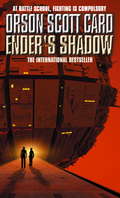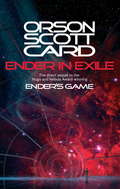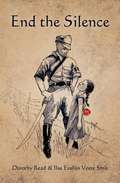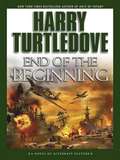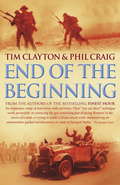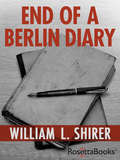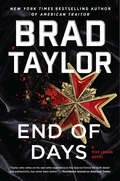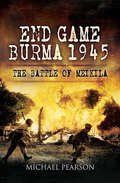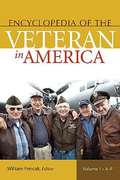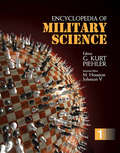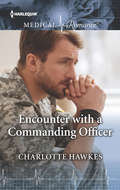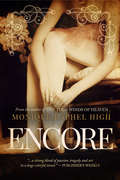- Table View
- List View
Endgame, 1945: The Missing Final Chapter of World War II
by David Stafford"War is too important to be left to the generals," Georges Clemenceau once famously remarked. Stafford (Centre for the Study of the Two World Wars, U. of Edinburgh, UK) adds, "the history of war is too important to be left to the military historians alone," especially as they tend to end their accounts with the immediate cessation of hostilities and neglect the importance of war's aftermath. His method of capturing some of the realities of the final days and immediate aftermath, through mid-summer 1945, of World War II, is to weave together the biographies of "a handful of individuals," including a German mother separated from her sons and imprisoned by the Nazis, a British commando witness to the aftermath of the horrors of the concentration camps, an American soldier in Italy, a war correspondent traveling with Gen. Patton's forces into Germany, a Canadian officer in Holland, a German-Jewish exile serving as a British secret agent in Austria, a New Zealand intelligence officer working in opposition to the communists in the disputed city of Trieste, an American paratrooper in Berlin involved in some the very first manifestations of the Cold War confrontation with the Soviets, and a woman involved with humanitarian work for concentration camp victims. Annotation ©2008 Book News, Inc., Portland, OR (booknews.com)
Endgame (Star Trek: Voyager)
by Diane Carey Christie GoldenFor seven tumultuous years, the U.S.S. Voyager has explored the Delta Quadrant, encountering strange alien civilizations and bizarre space-time anomalies as it steadfastly made its way back toward the safety of Federation space. Captain Kathryn Janeway and her heroic crew have faced all manner of harrowing danger and hostile life-forms -- including the Kazons, the Borg, and the Q -- while never losing sight of their ultimate goal: home. Now, at last, Voyager's epic trek may be nearing its end... After so many perilous and astounding adventures, will Captain Janeway finally bring her wayward starship back to the Alpha Quadrant? And what will become of her diverse yet tightly knit crew? Will Chakotay, B'Elanna Torres, and the other former Maquis freedom fighters face long-delayed justice for their crimes against the Federation? And is there any place in Starfleet for the uniquely independent Borg known as Seven of Nine? As the ultimate destiny of Voyager is revealed, all that is certain is that nothing will ever be the same!
Ender's Shadow: Book 1 of The Shadow Saga (Shadow Saga #1)
by Orson Scott Card'The emotional punch is still as powerful as ever. Excellent.' - SFX'Haunting, compulsive, urgently readable...Story-telling genius.' - InterzoneOrson Scott Card is one of the world's bestselling SF authors, and the award-winning Ender saga is one of the best-loved series in the genre. ENDER'S SHADOW is the first volume in a new Ender series. Returning to the time of Ender's Game, ENDER'S SHADOW follows the incredible story of one of Ender Wiggin's fellow pupils at Battle School. Compelling, compulsive reading, ENDER'S SHADOW is certain to thrill all fans of the original series and attract many new readers.The first book in a new Ender series by bestselling author Orson Scott Card.Books by Orson Scott Card:Alvin Maker novelsSeventh SonRed ProphetPrentice AlvinAlvin JourneymanHeartfireThe Crystal CityEnder Wiggin SagaEnder's GameSpeaker for the DeadXenocideChildren of the MindEnder in ExileHomecomingThe Memory of the EarthThe Call of the EarthThe Ships of the EarthEarthfallEarthbornFirst Formic War (with Aaron Johnston)Earth UnawareEarth AfireEarth Awakens
Ender's Game: Response Journal (The Ender Quintet #1)
by Orson Scott CardWinner of the Hugo and Nebula AwardsIn order to develop a secure defense against a hostile alien race's next attack, government agencies breed child geniuses and train them as soldiers. A brilliant young boy, Andrew "Ender" Wiggin lives with his kind but distant parents, his sadistic brother Peter, and the person he loves more than anyone else, his sister Valentine. Peter and Valentine were candidates for the soldier-training program but didn't make the cut—young Ender is the Wiggin drafted to the orbiting Battle School for rigorous military training.Ender's skills make him a leader in school and respected in the Battle Room, where children play at mock battles in zero gravity. Yet growing up in an artificial community of young soldiers Ender suffers greatly from isolation, rivalry from his peers, pressure from the adult teachers, and an unsettling fear of the alien invaders. His psychological battles include loneliness, fear that he is becoming like the cruel brother he remembers, and fanning the flames of devotion to his beloved sister. Is Ender the general Earth needs? But Ender is not the only result of the genetic experiments. The war with the Buggers has been raging for a hundred years, and the quest for the perfect general has been underway for almost as long. Ender's two older siblings are every bit as unusual as he is, but in very different ways. Between the three of them lie the abilities to remake a world. If, that is, the world survives.Ender's Game is the winner of the 1985 Nebula Award for Best Novel and the 1986 Hugo Award for Best Novel.At the Publisher's request, this title is being sold without Digital Rights Management Software (DRM) applied.
Ender's Game (Ender's Game #1)
by Orson Scott CardIn order to develop a secure defense against a hostile alien race's next attack, government agencies breed child geniuses and train them as soldiers. A brilliant young boy, Andrew "Ender" Wiggin lives with his kind but distant parents, his sadistic brother Peter, and the person he loves more than anyone else, his sister Valentine. Peter and Valentine were candidates for the soldier-training program but didn't make the cut — young Ender is the Wiggin drafted to the orbiting Battle School for rigorous military training.<P><P> Ender's skills make him a leader in school and respected in the Battle Room, where children play at mock battles in zero gravity. Yet growing up in an artificial community of young soldiers Ender suffers greatly from isolation, rivalry from his peers, pressure from the adult teachers, and an unsettling fear of the alien invaders. His psychological battles include loneliness, fear that he is becoming like the cruel brother he remembers, and fanning the flames of devotion to his beloved sister.<P> Is Ender the general Earth needs? But Ender is not the only result of the genetic experiments. The war with the Buggers has been raging for a hundred years, and the quest for the perfect general has been underway for almost as long. Ender's two older siblings are every bit as unusual as he is, but in very different ways. Between the three of them lie the abilities to remake a world. If, that is, the world survives.<P> Hugo and Nebula Awards Winner.
Ender In Exile: Book 5 of the Ender Saga (Ender Saga #5)
by Orson Scott Card'The novels of Orson Scott Card's Ender series are an intriguing combination of action, military and political strategy, elaborate war games and psychology.' - USA TODAY'Hugo and Nebula-award winner Orson Scott Card demonstrates again that he belongs in the company of such older masters of science fiction as Isaac Asimov, Frank Herbert and Ursula K. Le Guin.' - Magill Book ReviewsAt first, Ender believed that they would bring him back to Earth as soon as things quieted down. But things were quiet now, had been quiet for a year, and it was plain to him now that they would not bring him back at all, that he was much more useful as a name and a story than he would ever be as an inconveniently flesh-and-blood person.At the close of ENDER'S GAME, Andrew Wiggin - called Ender by everyone - knows that he cannot live on Earth. He has become far more than just a boy who won a game: he is the Saviour of Earth, a hero, a military genius whose allegiance is sought by every nation of the newly shattered Earth Hegemony.He is offered the choice of living under the Hegemon's control, a pawn in his brother Peter's political games. Or he can join the colony ships and go out to settle one of the new worlds won in the war. The story of those years on the colony worlds has never been told . . . until now.The direct sequel to the Hugo and Nebula Award-winning bestseller, ENDER'S GAME.Books by Orson Scott Card:Alvin Maker novelsSeventh SonRed ProphetPrentice AlvinAlvin JourneymanHeartfireThe Crystal CityEnder Wiggin SagaEnder's GameSpeaker for the DeadXenocideChildren of the MindEnder in ExileHomecomingThe Memory of the EarthThe Call of the EarthThe Ships of the EarthEarthfallEarthbornFirst Formic War (with Aaron Johnston)Earth UnawareEarth AfireEarth Awakens
End the Silence
by Dorothy Read Ilse Evelijn Veere SmitEnd the Silence tells the story of Ilse, an Indo-European born into an idyllic childhood in the colonial society of the Dutch East Indies. Ilse's privileged life was forever changed when the Japanese invaded her homeland during World War II. She recounts her years of internment in a Japanese concentration camp on Java. Then, at the war's end she walked out of Camp Halmaheira only to walk into the bloody Indonesian revolution where she was targeted for execution by native freedom fighters. Finally, she tells of the pain she suffered trying to cope with her memories in a family that refused to talk about it. As Ilse recalls the scenes in her remarkable journey, Dorothy Read paints them in the words of both the young Ilse who lived them and today's Ilse who reflects upon them.
End of the Game (Destroyer #60)
by Warren Murphy Richard SapirWhen a California Video game programmer gets board he begins manipulating people's lives for fun. When his boardom, leads him into an attempt at neuclear war, Remo is sent in to provide entertainmet.
End of the Beginning (Pacific War Series #2)
by Harry TurtledoveSix weeks ago, Imperial Japanese military forces conquered and occupied the Hawaiian Islands. A puppet king sits on Hawaii's throne, his strings controlled by the general of the invasion force. American POWs, malnourished and weak, are enslaved as hard laborers until death takes them. Civilians fare little better, struggling to survive on dwindling resources. And families of Japanese origin find their loyalties divided. Meanwhile, across the United States, from Pensacola, Florida, to San Diego, California, the military is marshaling its forces. Steel factories and fuel refineries are operating around the clock. New recruits are enlisting, undergoing rigorous training exercises. All for the opportunity to strike back and drive the enemy from American soil...
End of the Beginning
by Phil Craig Tim Clayton1942 - British troops are stranded in the desert, struggling to hold back Rommel's Afrika Corps. Hitler's armies have reached Moscow, and there are murmurs of discontent at home as new doubts emerge about Churchill's leadership. Elsewhere in Europe there is chilling evidence of the mounting persecution of the Jews, stretching from Poland to the Channel Islands. For many, it seems there is little hope. As in their acclaimed bestseller FINEST HOUR, the authors use the personal testimony of ordinary people - In END OF THE BEGINNING we meet again some of the people first encountered in FINEST HOUR, and get to know many more. Troops fighting for Montgomery in the desert, RAF pilots bombing German towns, a young Jewish woman deported to Auschwitz from Guernsey, the reality of the Home Front - these stories and many more paint a vivid picture of human endeavour in time of war. And, sixty years on from the Battle of Alamein, END OF THE BEGINNING tells the controversial truth about one of the most famous battles in history - the importance of its lesser-known predecessor and the months of bitter in-fighting between the Allied generals. With precision and compassion, Phil Craig and Tim Clayton again debunk the myths and explore the realities of a crucial year in the history of Britain.
End of the Affair: The Collapse of the Anglo-French Alliance, 1939 - 40
by Eleanor M. GatesThis title is part of UC Press's Voices Revived program, which commemorates University of California Press’s mission to seek out and cultivate the brightest minds and give them voice, reach, and impact. Drawing on a backlist dating to 1893, Voices Revived makes high-quality, peer-reviewed scholarship accessible once again using print-on-demand technology. This title was originally published in 1981.
End of a Berlin Diary
by William L. Shirer"When I came home from Berlin at Christmas time in 1940, I found most of my fellow countrymen unaware of what Hitler was really up to and somewhat confused as to how he had accomplished his evil designs. Some Americans didn't much care. Since it had been my lot to witness Europe's agony at first hand, I collected some of my notes in a book for the edification of such citizens as cared to read it. This book of notes is, in a way, a sequel to Berlin Diary. It is the end of my own small contribution to the Berlin story. There was a great deal, of course, that a reporter had not been able to learn in the frenzied Nazi capital beyond the Elbe. The sinister plots, the fateful decisions, that had plunged the world into such awful horror and misery had been made in secret. And what had really gone on in Germany after I left? Had defeat and collapse solved the German problem -- at least for the rest of our lifetime ? After the war's end I went back to Berlin to try to find out. I prowled the obscene ruins of the once proud capital and talked with the remnants of the Herrenvolk. At Nuremberg, amidst the debris of the lovely medieval town, I saw the surviving leaders of the Nazi gangster world, who had wielded such monstrous power so arrogantly when last I beheld them, finally brought to justice. Most important of all, I had access to a good part of the fourteen hundred tons of secret German documents that the Allies had captured intact. You will find the essential portions of many of them in this book. I have been content to let the German authors tell in their own inimitable words the dark and almost unbelievable tale of their savagery and deceit. Had these secret archives of the German government been destroyed, as the Nazis intended them to be, much of the truth about our weird period in history would have been buried forever. Now it is here for those who care to learn it. I have also tried to include in this book the thread of another story -- the story of the beginning of the Peace. Reader, you and I have already forgotten the fleeting moment of glory and man's magnificent sense of dedication the day peace descended on this wretched earth. I know that erring mortals cannot remain on the heights for long. But these notes, scribbled down at the time, may help to remind you that many on our side achieved those heights after the war's bloody struggles had brought out their inhuman courage, their bravery, and their wonderful fortitude."
End of a Berlin Diary
by William L. Shirer&“A vivid and unforgettable word picture of the destruction of Nazi Germany&” (The New York Times). A radio broadcaster and journalist for Edward R. Murrow at CBS, William L. Shirer was new to the world of broadcast journalism when he began keeping a diary while on assignment in Europe during the 1930s. It was in 1940, when he was still virtually unknown, that Shirer wondered whether his eyewitness account of the collapse of the world around Nazi Germany could be of any interest or value as a book. Shirer&’s Berlin Diary, which is considered the first full record of what was happening in Germany during the rise of the Third Reich, appeared in 1941. The book was an instant success—and would not be the last of his expert observations on Europe. Shirer returned to the European front in 1944 to cover the end of the war. As the smoke cleared, Shirer—who watched the birth of a monster that threatened to engulf the world—now stood witness to the death of the Third Reich. End of a Berlin Diary chronicles this year-long study of Germany after Hitler. Through a combination of Shirer&’s lucid, honest reporting, along with passages on the Nuremberg trials, copies of captured Nazi documents, and an eyewitness account of Hitler&’s last days, Shirer provides insight into the unrest, the weariness, and the tentative steps world leaders took towards peace.
End of War
by Edward LoomisHe came from Ohio. Young, unsure of himself, innocent. He came to Europe as an infantryman battling his way into the heart of Germany.There he stopped being unsure of himself. He stopped when he first went into battle and heard the singing of bullets close overhead, heard the crump of the four-inch mortars and saw the Tiger tanks rumbling towards him.He grew to maturity when he killed his first German and he stopped being innocent when he bought his first woman...for a bar of chocolate.When the war ended and the fighting died away, how was he to regain his lost innocence? How was he to lose the habits of a killer?There was no one to help him except Chrystel, the refugee with the body of a girl and the heart of a woman. No one but Chrystel...and himself.
End of Days: A Pike Logan Novel (Pike Logan #16)
by Brad TaylorPike Logan must stop a deranged killer hell-bent on igniting an international conflagration in this explosive, action-packed thriller from New York Times bestselling author and former special forces officer, Brad Taylor.When a paragliding trip over the picturesque mountains of Switzerland results in the brutal murder of the former head of Israeli intelligence, Mossad brings in terrorist hunters Aaron and Shoshana to investigate. But they'll need help to find out who was behind the attack and what they’re planning next. Luckily, Aaron and Shoshana know exactly who to call.Taskforce operators Pike Logan and Jennifer Cahill have been trapped in Charleston, South Carolina during COVID-19, so when Aaron and Shoshana show up on their doorstep with Israeli passports and a new mission, they jump at the chance to assist their friends. Some suspect that Keta’ib Hezbollah, an Iranian-funded militia group operating in Iraq, might be responsible for the “accidental” deaths of key members of the American and Israeli governments. But something isn’t adding up, and Pike, Jennifer, and the two Mossad operators are determined to find the real assassins before more people are cut down.As they stumble upon the trail of a serial killer loose on the streets of Rome connected to the deaths and follow evidence leading to the exalted Knights of Malta, they must wade deep into the contentious religious and political fractures of Israel and the greater Middle East. It’s a dangerous world where fanatics and legitimate organizations exist side by side, and it’s up to the Taskforce to determine who is really pulling the strings. What they find could have disastrous consequences not only for them, but for the entire world…
End of Days (Chronicles of Brothers #3)
by Wendy AlecBrothers at war. Mankind deceived. Hell on Earth.A man face down in the dirt amid melting Arctic snow, a deep sense of unease but no memory of how he got there – Jason De Vere, once the head of a global media empire.Found and briefly taken to a safe house, Jason&’s soon on the run again – there&’s a 50-million-dollar bounty if he can be taken alive.Thrown together with his ex-wife and a crusading young journalist, Jason begins a desperate search for answers. It&’s a race against time, a fight for survival – and the stakes are higher than he could possibly have imagined.4 billion microchips – promising miraculous benefits – are being shipped to population centres around the world. And soon every human being on Earth will have to make a choice…CHRONICLES OF BROTHERS is the story of three brothers fighting for the future of humanity. From desert tombs, to the towers of Wall Street, to the ancient past, this super-epic tale reveals the hidden history of mankind and the origins of evil itself.
End Game Burma, 1945: Slim’s Masterstroke at Meikila
by Michael PearsonWhen the Burma campaign is discussed, the turning point battles of Imphal and Kohima are most often thought of. However General Bill Slims bold but risky plan to outflank the Japanese on the Irrawaddy at Mandalay deserves far more credit.With the Japanese withdrawing, Slims 14 Army (with two Corps XXXIII and IV) risked a punishing crossing of the mighty Irrawaddy at Mandalay opposed by the main Japanese army. To avoid this is was decided to split 14 Army and send IV Corps on an arduous 300 mile march to seize the town of Meiktila, 85 miles south, a vital rail and road hub and the main Japanese administrative base.Complete secrecy was essential as if the Japanese realized they faced only one Corps rather than two, they might have counter attacked successfully. In this detailed analysis of this crucial maneuver the author describes the plan, the risks, the actions, the seemingly insuperable logistic problems, and the efforts to retain US air support (for which Mountbatten was largely responsible).
Encyclopedia of the Veteran in America
by William PencakA comprehensive encyclopedia that describes the experiences of American veterans from the Revolutionary War to the present.
Encyclopedia of Warfare: From the Earliest Times to the Present Day
by Adrian GilbertThe Encyclopedia of Warfare is a chronological account of the development of warfare since the beginnings of recorded history. The book is organized in 10 chapters, each of which looks at a particular era in warfare from the ancient world to the present. Each chapter includes color maps of key campaigns, as well as commentary on battles, personalities, troops, and equipment. Sidebars throughout the main narrative focus on noteworthy aspects of the history of conflict. Through its chronological organization and ample use of maps, the Encyclopedia also clearly conveys the link between war and world geographical history. A thorough yet concise exploration of combat throughout human history, this fascinating and informative reference work is an outstanding addition to any library collection.
Encyclopedia of Modern War (Routledge Library Editions: International Security Studies #5)
by Roger ParkinsonThis book, first published in 1977, presents a comprehensive survey of the upheavals experienced in warfare from 1793 to the end of the twentieth century, a period that saw many fundamental changes – from the Napoleonic wars to the advent of total war, guerrilla and nuclear warfare. It discusses in detail the main aspects of warfare – battles, weapons, and people. It concentrates equally on all three, not emphasising one aspect at the expense of the others, and allowing cross-references between them so as to fit them into the general pattern of development. Also included are other factors essential to an understanding of modern warfare, such as technological items, and conceptual entries such as basic strategy and tactics, and various military theories and principles.
Encyclopedia of Military Science
by G. Kurt PiehlerThe Encyclopedia of Military Science provides a comprehensive, ready-reference on the organization, traditions, training, purpose, and functions of today’s military. Entries in this four-volume work include coverage of the duties, responsibilities, and authority of military personnel and an understanding of strategies and tactics of the modern military and how they interface with political, social, legal, economic, and technological factors. A large component is devoted to issues of leadership, group dynamics, motivation, problem-solving, and decision making in the military context. Finally, this work also covers recent American military history since the end of the Cold War with a special emphasis on peacekeeping and peacemaking operations, the First Persian Gulf War, the events surrounding 9/11, and the wars in Afghanistan and Iraq and how the military has been changing in relation to these events. Click here to read an article on The Daily Beast by Encyclopedia editor G. Kurt Piehler, "Why Don't We Build Statues For Our War Heroes Anymore?"
Encyclopedia of Military Science
by G. Kurt PiehlerThe Encyclopedia of Military Science provides a comprehensive, ready-reference on the organization, traditions, training, purpose, and functions of today’s military. Entries in this four-volume work include coverage of the duties, responsibilities, and authority of military personnel and an understanding of strategies and tactics of the modern military and how they interface with political, social, legal, economic, and technological factors. A large component is devoted to issues of leadership, group dynamics, motivation, problem-solving, and decision making in the military context. Finally, this work also covers recent American military history since the end of the Cold War with a special emphasis on peacekeeping and peacemaking operations, the First Persian Gulf War, the events surrounding 9/11, and the wars in Afghanistan and Iraq and how the military has been changing in relation to these events. Click here to read an article on The Daily Beast by Encyclopedia editor G. Kurt Piehler, "Why Don't We Build Statues For Our War Heroes Anymore?"
Encounter with a Commanding Officer
by Charlotte HawkesRules of engagement! Army trauma doctor Major Felicity Delaunay likes the rules and regulations that give structure to her life. But the arrival of maverick hotshot Colonel Ash Stirling is about to turn her world upside down! Ash hasn't overcome his troubled past to get where he is without taking risks, but he never crosses the line. Not with a colleague...no matter how gorgeous! Yet Felicity gets under his skin like no other, and he soon finds himself breaking all his-and her-rules.
Encore
by Monique Raphel HighWhat if you had to choose between your deepest passion and your one true love? Beautiful and talented, Natalia Oblonova must deny her heart to achieve her dreams of joining the Mariinski Ballet. Becoming the protégée and wife of Count Boris Kussov, an enigmatic, charismatic member of the highest aristocracy is Natalia's ticket to fame and prestige in a cutthroat world of competition and betrayal. But her heart isn't his. Her heart belongs to an unruly artist, Pierre Riazhin--an artist she left for her place as a socialite. Through wars and deception, passion and lust, nothing can keep Pierre from having what he's always wanted--Natalia. He wants his second chance--his encore.
En un hotel de Malmö
by Marie BennettLa lucha por la supervivencia, el amor y la traición impregnan las páginas de esta intensa y cautivadora novela ambientada en la Suecia de 1940 que ya es considerada en Escandinavia como el Casablanca sueco. En Suecia, durante el duro invierno de 1940, Georg es reclutado para defender la frontera con Finlandia contra el avance del Ejército Rojo. Mal equipados, desnutridos y expuestos a temperaturas extremas, los soldados están a merced de oficiales sádicos e incompetentes. Tras un motín, Georg y otros soldados rebeldes son enviados a un campo de trabajo. Mientras tanto, Kerstin, la esposa de Georg, sobrevive como puede en Malmö, atrapada entre una madre distante y un hermano dedicado al mercado negro. Ya no espera el regreso de su esposo, que ha estado tres años ausente, cuando conoce a Viola, una mujer rica, atractiva y culta de la que se enamora, y con la que vive una apasionada relación prohibida. En la Navidadde 1943, Georg regresa, traumatizado por las experiencias vividas. Su inesperado retorno obligará a Kerstin a encarar una difícil decisión. Críticas:«Una novela completamente adictiva.»Aftonbladet


